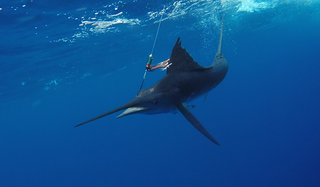Deep sea fishing will push every part of your setup to the max- rod, line, and especially drag. A skilled angler can have the finest reel in the world, but without the drag properly tuned, the fight is lost before it ever begins. The knowledge of how you and your setup and equipment react to strain, heat, surge, etc., is what separates a clean catch from a missed opportunity.
It allows you to throw those heavier lures in confidence, chase down some speed demon dorado, without blowing that once-in-a-lifetime chance.
Even seasoned anglers sometimes forget how much drag is until they are surprised by a fish. If you take some time and understand what your reel's action will do under pressure, or if the line suddenly surges under strain, it will save you hours of frustration. While most deep sea battles usually do not end with a clean catch, it is unpredictable, and every little adjustment matters.
Why Drag Settings Matter
Drag isn't just a dial on your reel; it's your line's safety net. Too tight, and a sudden run from a strong fish can snap your line instantly. Too loose, and you'll struggle to hook or control aggressive fighters. Having your drag properly balanced will allow your line to spit out smoothly, absorb shock, and keep your entire setup in check.
Even with dorado fishing lures, if your drag is set properly, it can mean the difference between landing a fish or watching it swim away. Dorado are fast and unpredictable, so the more you can set the drag up in alignment with their strength, the more you can adjust to those bursts without overly stressing your rod or reel.
Understanding Reel and Line Interaction
Every reel and line combination behaves differently under pressure. Drag performance depends on both.
- Line type: Braided lines stretch less than monofilament, affecting how drag absorbs force.
- Drag heat: Extended runs generate friction and heat, potentially weakening line strength.
- Spool pressure: A heavier lure or faster fish puts more strain on the spool; the drag system must compensate.
- Saltwater conditions: Corrosion and water temperature can subtly affect drag efficiency over time.
Matching your line to your lure type and the size of your target species is critical. A lightweight lure on a heavy drag setting can snap a line before a fish tires. Taking the time to test these combinations before leaving the dock will help avoid costly mistakes offshore.
Testing Drag Before You Go
Checking drag at home or dockside saves headaches offshore. Pull the line by hand or use a weighted object to simulate a fish. The goal is smooth resistance- you should feel consistent tension without sudden locks or jerks. Adjustments are often minor, but they have major consequences once you're fighting a strong fish.
Tips for effective drag testing:
- Simulate fish bursts with varying weights to mimic real conditions.
- Test both light and heavy drag settings to find optimal tension ranges.
- Take notes for each reel and line combination for reference on future trips.
Adjusting Drag On the Water
Fish behavior varies mid-fight. They may sprint, dive, or circle. Being able to adjust drag on the fly is essential:
- If the fish makes a short, strong run, slightly loosening the drag prevents line snap.
- When the fish tires, increasing drag helps reel it in faster.
- Watch the fish's movement carefully; aggressive, erratic runs often require quick micro-adjustments.
Using Wahoo lures is a perfect example. Wahoo are lightning-fast predators. Matching drag to their burst speed ensures your lure performs as intended and keeps the fight manageable. Observing how fish interact with the lure and responding with precise drag adjustments separates experienced anglers from casual hobbyists.
Common Mistakes to Avoid
Even experienced anglers slip up sometimes. Avoid these common errors:
- Over-tightening the drag before the fight begins.
- Forgetting to reset the drag after catching a previous fish.
- Ignoring environmental conditions like temperature or saltwater corrosion that affect drag performance.
- Failing to match lure size with drag can result in lost strikes.
Being mindful of these mistakes ensures consistent results and reduces gear wear over time.
Advanced Tips for Big Game Success
- For larger predators, lure size and drag go hand in hand.
- Larger marlin trolling lures need slightly higher drag to control runs without snapping the line.
- Small lures require finesse and lower drag to avoid pulling the hook out or causing line breaks.
- Testing different drag settings during practice casts or local trips builds confidence for offshore battles.
Quick reference tips:
- Carry a range of drag settings for different fish species.
- Observe prey behavior to adjust lure size and drag accordingly.
- Record and note successful settings for specific species and conditions.
- Make minor incremental adjustments rather than large jumps in tension.
Adjusting drag and picking drag isn't a guessing game it is preparation. For advice on selecting the proper lures or settings to optimize your drag, call us at Magbaylures and speak with our experts who know the ins and outs of offshore fishing.

